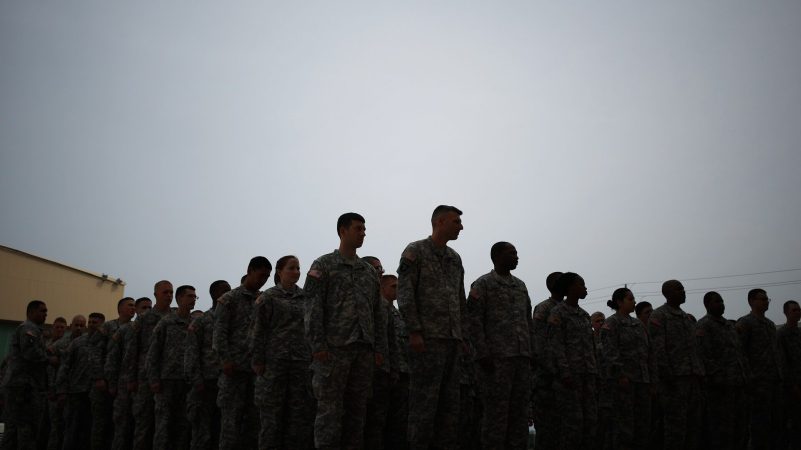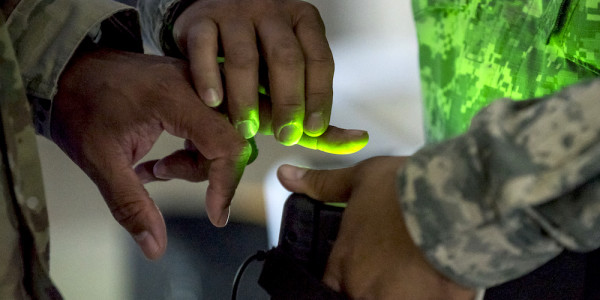An Army audit found that thousands of domestic violence incidents involving soldiers fell through the cracks without oversight, resulting in cases of victims being re-harmed and even killed by perpetrators who had already been identified as abusers.
An Army audit obtained by the Project On Government Oversight through a Freedom of Information Act request and shared with Task & Purpose found that the Army didn’t properly track thousands of domestic abuse reports in two different tracking databases and failed to enforce relevant training among its soldiers. The audit linked both factors to repeated domestic abuse.
The audit found that 13% of military domestic abuse cases is committed by repeat offenders, who can often be more dangerous than first-time offenders. A 2022 Army report found that of fourteen people who died from domestic abuse linked to service members that year, five were killed by people who had been previously reported for abuse. Among those who were killed, four had previously reported abuse.
“The Army also risked higher rates of domestic abuse repeat offenses and increased negative impacts to mission readiness,” the audit concluded.
At the heart of the undercount is discrepancies between two Army databases the service uses to track domestic abuse. More than 4,000 domestic violence incidents between fiscal years 2019 and 2021 weren’t counted in the systems. One system failed to track 1,962 domestic violence reports and the second system failed to record 2,294 incidents, according to the audit.
The auditors said that since officials weren’t aware of the full scope of domestic abuse incidents, “they risked underreporting” nearly 2,000 incidents. Along with increasing the risk that some offenders could escape accountability, the undercounting likely meant less dollars put towards prevention.
“Data is not just data,” said René Kladzyk, an investigative reporter for POGO. “The auditors are very clear that when you have inaccuracies in data that can lead to not directing enough money toward the Army’s domestic violence prevention programs.”
The audit focused on the Army’s two information systems: the Family Advocacy System of Records (FASOR) and the Army Law Enforcement Reporting and Tracking System (ALERTS).
The tracking systems are supposed to have identical tallies of domestic violence reports but the audit found that 70% of incidents tracked in FASOR weren’t recorded in the ALERTS system and 56% of incidents tracked in ALERTS were not in the FASOR system. The systems also report different data since ALERTS only tracks criminal offenses. Emotional abuse, for example, would not be included in that set but is available in FASOR.
“The findings represent just a fraction of the true potential scale of undercounting: Auditors limited their analysis of such incidents to a sample of 10 Army installations around the country, out of roughly 60 Army bases nationwide,” according to POGO. This means that the Army audit only captured a snapshot of the missed reports over three years.
Fixing ‘inconsistencies’
Lieutenant Colonel Ruth Castro, a spokesperson for Army headquarters, said the Army needs two separate databases because of differing requirements for Army law enforcement organizations and the Army’s program for preventing, identifying, and investigating domestic violence.
The Army is currently revising the regulation governing usage of these databases under the Army Family Advocacy Program in response to the audit’s findings, Castro said in an email to POGO. She said the Army aims to “identify and rectify any inconsistencies” between the two databases. But beyond indicating that the regulation was undergoing revision, Castro declined to provide more recent documentation of policy or procedural updates to address the data tracking problems.
Jacquelyn Campbell, an expert in domestic violence, said the audit’s findings need to be understood within the context of the already “tremendous underreporting” of domestic violence among service members. She gave the example of an abuse survivor who is the wife of an active-duty military member.
“If she reports abuse … she’s got to think to herself, ‘Okay, if it gets on his record, this could mean he is denied his next promotion, or he is not allowed to reenlist,” she said. “He’s my husband, he’s the father of my children, and this means my source of support is going to be seriously affected. So I’m going to think twice, three times, four times before I make a report,” Campbell, a congressional appointee to the Pentagon’s Task Force on Domestic Violence, told POGO.
The Department of Defense’s failure to effectively track domestic violence incidents was previously highlighted in 2021 with a Government Accountability Office report. The GAO found that the DOD had not collected and reported accurate data for all domestic abuse allegations it received due to different reporting systems among the services and inconsistent counting methods.
Abuse more common with military and veterans than civilians
Studies comparing domestic violence incidents in military communities to the civilian world have found that incident rates were higher among service members compared to civilians. Researchers said prevalence was even higher for veterans compared to active duty troops.
In the Army, there is a formal process for investigating domestic violence when an incident involving a soldier is reported, according to POGO. Military and civilian law enforcement are notified and the base Family Advocacy Program performs a safety assessment. The program opens an investigation alongside, since the beginning of this year, the Office of the Special Trial Counsel, the Pentagon’s new legal team charged with prosecuting criminal offenses like domestic violence, rape and murder.
Repeat offenders make up one in every eight cases
However, the audit found that the formal process wasn’t enforced or standardized which led to repeated abuse, finding as many as 13% of domestic violence incidents were perpetrated by repeat offenders. The audit linked this to a lack of training, enforcement of treatment plans and monitoring of “high-risk” soldiers with multiple offenses.
In cases of domestic violence, repeat offenses can eventually turn fatal. In fiscal year 2022, 14 people died from domestic abuse linked to service members. Four of the deaths were caused by previous perpetrators who were reported and four of those who were killed previously reported abuse, according to a Pentagon report.
The audit also assessed training for domestic abuse across three installations. Auditors found that more than 35% of soldiers didn’t receive the required annual domestic abuse prevention training.
Also, 36% of a group of 602 soldiers who were repeat offenders hadn’t completed their required treatment plans, the audit found.
“Statisticians with the Army’s Family Advocacy Program identified a direct correlation between the number of soldiers who completed the treatment and a reduced risk of repeat offenses compared to those who did not complete the treatment,” according to POGO.
Josh Connolly, senior vice president of Protect Our Defenders told POGO that the audit’s findings were “outrageous” and emphasized the difficulty for survivors to report these types of incidents in the first place.
“It’s really galling when someone bravely comes forward to report this and then the appropriate measures and response doesn’t happen,” he told POGO.
This story was produced in cooperation with the Project On Government Oversight. Read their full report on the Army’s audit of domestic abuse reporting here.
The latest on Task & Purpose
- 82nd Airborne paratroopers cut down a 101st flag from an iconic bar on D-Day
- Navy fires USS Somerset’s commanding officer following investigation
- Two ex-U.S. soldiers met in Ukraine, then went on ‘international crime spree’
- A combat controller earned a secret Air Force Cross for battle with Russian mercenaries
- Fort Moore renames five gates for battlefield heroes like Alwyn Cashe

























